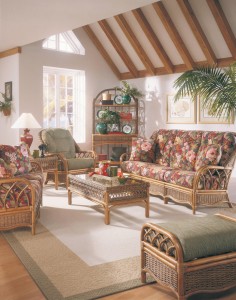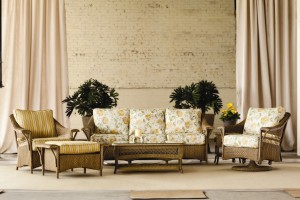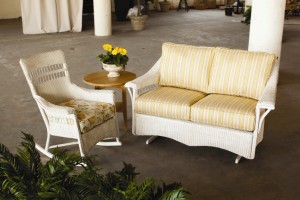What is wicker, and why should I choose it for my home furnishings? Synthetic vs. Natural Options
Wicker results from a technique of bending and weaving material such as rattan, paper, bamboo, other grasses, or narrow woods like willow branches. You can identify these materials yourself by taking a close look and observing certain characteristics. When the material is bamboo, it will be possible to see rings. When tree branches are used, the telltale nature of rough bark will be apparent. With the proper care, the natural fibers of wicker furniture will continue to look in trim condition for years.

Wicker that is formed using fibrous vegetable material is both lightweight and strong. Because it’s not especially rigid, it needs to be woven around a frame. Upscale wicker furniture sometimes employs durable teak in the frame construction. Lower cost furnishings use thick pieces of rattan shaped with steam to make the frames.

Synthetic wicker patio furniture can possess many quality features, such as rust-proof and coated aluminum frames and all-weather materials. Synthetic wicker is constructed from polyethylene fibers, which makes this furniture practically maintenance-free and protects it from warping and fading. Its synthetic weave is able to withstand sun and harsh weather conditions yet still remain lovely and durable for years. Outdoor rated cushions and recyclable PE wicker are features to look for.

When purchasing wicker furniture, its comfort and beauty will be self-evident. Synthetic materials provide ease of maintenance, while natural materials can be long-lasting when properly maintained and can help foster environmental sustainability.
NEWSLETTER
Sign up for the latest news
